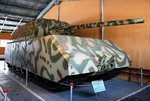- Thread starter
- #21
To Mikewint: I read the whole post of Mr.Wayne Little in the morning,and learn a lot from it. Thank you.The pastel chalks here we also used on some specific occassions,like german estern-front camouflage.Its a really nice way. but i have to say it's not universal.
Wash ,you dont need to repanit the model if you do it right .Just make the enamel thin enough like some kind of "coloured thinner". you can do it multi times to match the final result.
To Mr Jan:Holy sh*t.....that's quite crazy,you mean just few weeks?You shouldn't get any others if you want to built them all before you retired.(^^)
#1: Most parts of this Italeri kit are good.But the concrete-like rubber tracks almost kill me while i built it.you might change it for a metal or MK ones.
#2: Dragon's new tighr is good,detail of DS tracks is also good, it even have the holes in the teeth.
#3: Nice kit ,but i haven't built one yet.
#4: Be ware of the tracks.
#5: Do not to cement the guiding wheel firstly like it says on the paper. Beacuse T-34's track-link is longer than the other AFV's, you will fall into such situation if you glue the guilding wheels on.
"One more is too long ,One less is too Short"
#6: Same to #5
#7: Famous 1348 ,full internal structure tiger with good price.but most of the structures inside need to be corrected.Like the shell holder.There should be 4 rounds each layer not 3.
To imalko:Thanks, mate
* FOR THE NEW KING TIGHERS*
WOW ,thats nice!! mate.And you washed them,rigth?Looks nice~.Especially the camouflage.
BTW:what is the manufactor of the Jagdtiger?The shape of the barrel looks a little strange.
Wash ,you dont need to repanit the model if you do it right .Just make the enamel thin enough like some kind of "coloured thinner". you can do it multi times to match the final result.
To Mr Jan:Holy sh*t.....that's quite crazy,you mean just few weeks?You shouldn't get any others if you want to built them all before you retired.(^^)
#1: Most parts of this Italeri kit are good.But the concrete-like rubber tracks almost kill me while i built it.you might change it for a metal or MK ones.
#2: Dragon's new tighr is good,detail of DS tracks is also good, it even have the holes in the teeth.
#3: Nice kit ,but i haven't built one yet.
#4: Be ware of the tracks.
#5: Do not to cement the guiding wheel firstly like it says on the paper. Beacuse T-34's track-link is longer than the other AFV's, you will fall into such situation if you glue the guilding wheels on.
"One more is too long ,One less is too Short"
#6: Same to #5
#7: Famous 1348 ,full internal structure tiger with good price.but most of the structures inside need to be corrected.Like the shell holder.There should be 4 rounds each layer not 3.
To imalko:Thanks, mate
* FOR THE NEW KING TIGHERS*
WOW ,thats nice!! mate.And you washed them,rigth?Looks nice~.Especially the camouflage.
BTW:what is the manufactor of the Jagdtiger?The shape of the barrel looks a little strange.
Last edited:


